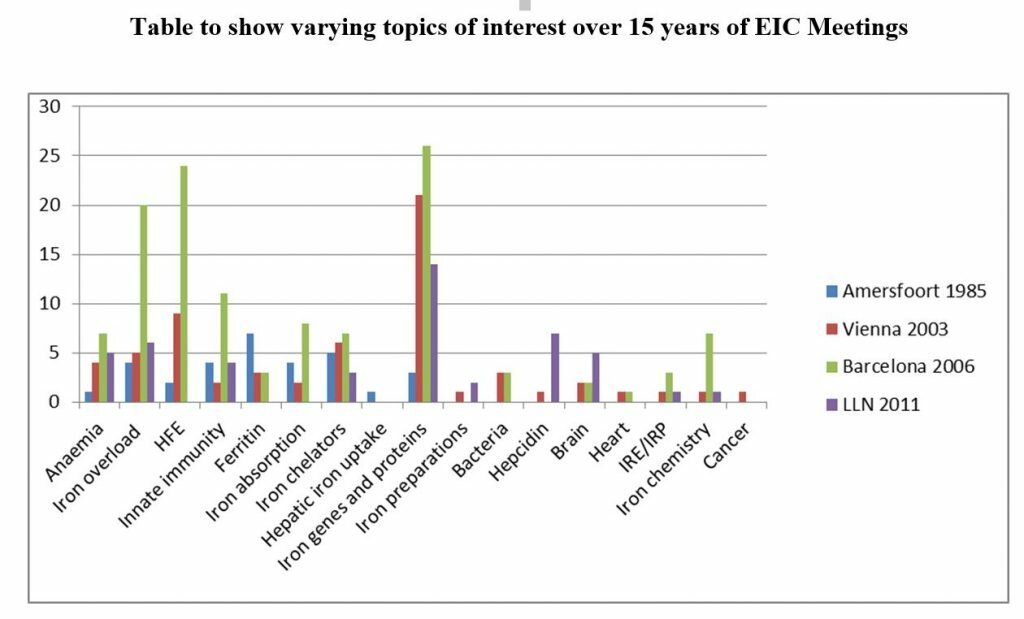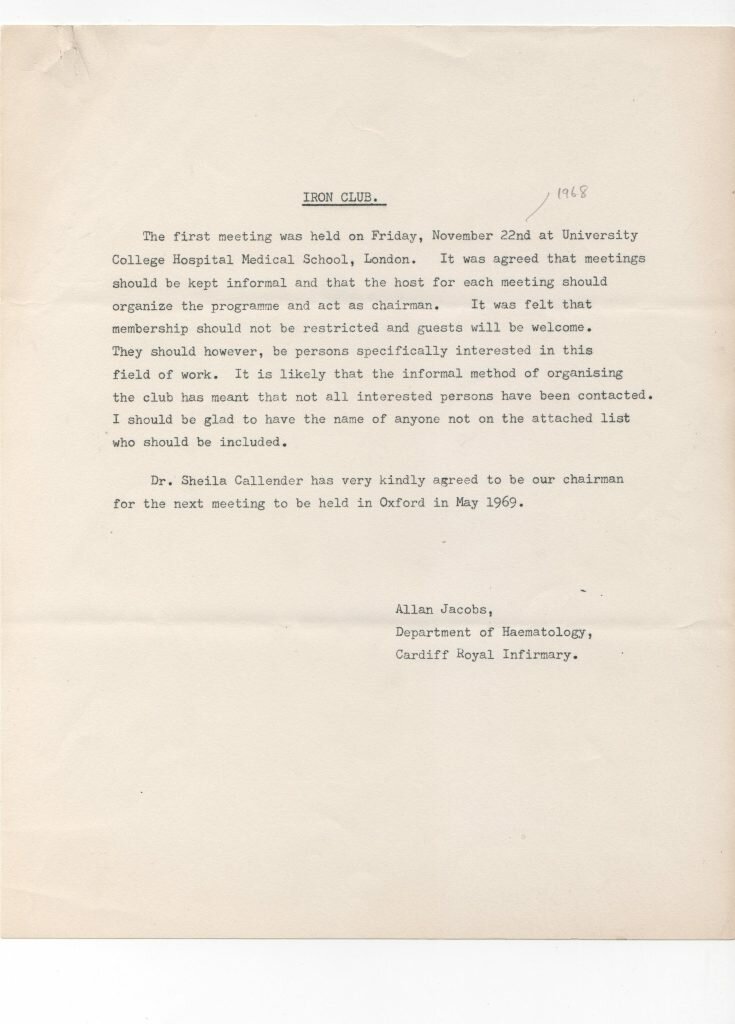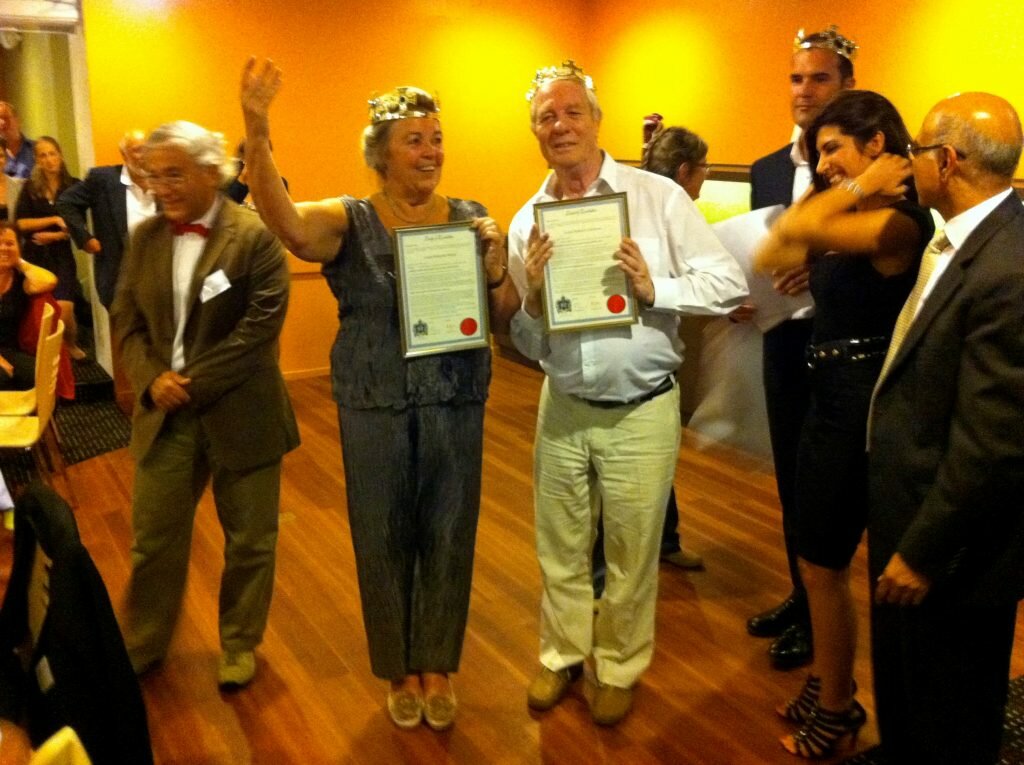The European Iron Club is a unique organisation. Founded over 40 years ago, it brings together scientists, clinicians, physicists, biochemists, nutritionist, etc, every year to discuss their latest research interests in a pleasant and friendly atmosphere. Furthermore low cost Meetings have been the aim of European Iron Club thus encouraging students and younger researchers to participate at the Meetings. Lastly bureaucracy has been kept to a minimum, with just the Secretary to orchestrate the proceedings. In this present book we plan to show the development of this Society, from a Meeting of the few which has now developed to Meetings of the many, when over 200 people attend.
We might well begin with the reflection – where did all start? There seems to us to be little doubt that the answer is unequivocally London during the 1960’s. In the beginning there was the London Iron Club, closely associated with Adam Turnbull and Jack Fielding. This group of haematologists, joined by biochemists like Ernie Huehns, were essentially interested in finding biochemical markers for iron overload and iron deficiency, and organised regular meetings in London, which gradually attracted other workers in the iron field from outside London. These included notably Allan Jacobs from Cardiff, who subsequently, together with his biochemicalcolleague Mark Worwood, was to have an enormous influence on the iron field. This resulted in meetings being held outside of London of the re-named Iron Club (Bob Crichton recalls Cardiff, Glasgow and Bristol).
Pauline Harrison organised a Meeting in Sheffield in the late 60’s (does anyone have the Abstract book?) when a long tradition was established to promote the city where the meeting was being held, for example, by inviting local dignitaries to welcome the EIC and to highlight local traditions. Thus, the Mayor of Sheffield duly turned out, a small man with a multitude of chains around his neck. He was followed by a display of local interests, which in Sheffield appeared to be clog dancing, and spending an inordinate amount of time spent in pubs drinking unmentionable quantities of real ale – incidentally, nobody would have dared to order a glass of wine. .Finally at this meeting, Bob Crichton was called upon by the local organiser, Pauline Harrison, to give a summing up of the proceedings, during which he pointed out that, if we tallied up the number of UK participants versus those from Europe, there were more of the latter than the former. From there, the idea of the European Iron Club was but a short step.
In these early days, the clinicians were interested in diagnostic parameters of iron status, while biochemists were particularly focused on the relatively well characterised proteins of iron metabolism, namely the iron transport and storage proteins, transferrin and ferritin.
Transferrinologists (if we may call them so) were obsessed with the Fletcher-Huehns hypothesis, according to which the two iron binding sites of transferrin behaved differently, the one delivering iron preferentially to erythroid cells, and the other to non-erythroid tissues (Fletcher and Huehns, 1968). Like the Loch Ness monster, it continued to rear its ugly head for many years even after a gel electrophoresis technique in denaturing conditions finally allowed the separation of all four forms of transferrin ( apo-, mono-A-, mono-B- and diferric) (Makey and Seal, 1976). In the meantime amino acid sequencing continued slowly on human serotransferrin in the USA (Keith Brew and Ross MacGillivray, Miami) and in Europe on lactotransferrin (Jean Montreuil and Genevieve Spik in Lille) and ovotransferrin (John Williams in Bristol).
The ferritin field was dominated by a trans-Atlantic controversy concerning the microheterogeneity of ferritin, involving the isoelectric focussing group around Jim Drysdale (including Paolo Arosio) in Boston, and Bob Crichton’s group in Louvain-la-Neuve, working tediously towards the amino acid sequence of horse spleen apoferritin. The outcome was essentially a draw. Most ferritins are indeed heteroplymers, made up of two subunits H and L (as we showed by sequencing part of the H chain from human spleen ferritin), yet horse spleen ferritin is almost entirely made up of the L-subunit, with such a small amount of the H-subunit that it would not have been detected by the primitive techniques used in the 1970-80s for direct protein sequencing.
In the clinical area, the happy concordance of the brief arrival of Nick Hales to the chair of Chemical Pathology in Cardiff (he subsequently went to Cambridge) prompted Allan Jacobs to incite him to develop a radioimmunoassay for serum ferritin, and the rest, as we say is history. Over at least the next decade Iron Club meetings were devoted to passionate discussions not only on diverse methods for serum ferritin assay and but also on its interpretation in a clinical context,
Fromthese early Meetings the stage was then set for the current series of AnnualMeetings of the EIC. In this book eachof these Meetings will be discussed together with information on the particularinterests of the Meeting, which, as the following examples show, have waxed andwaned in quite an interesting way over the years.
Roberta J Ward and Robert R Crichton



